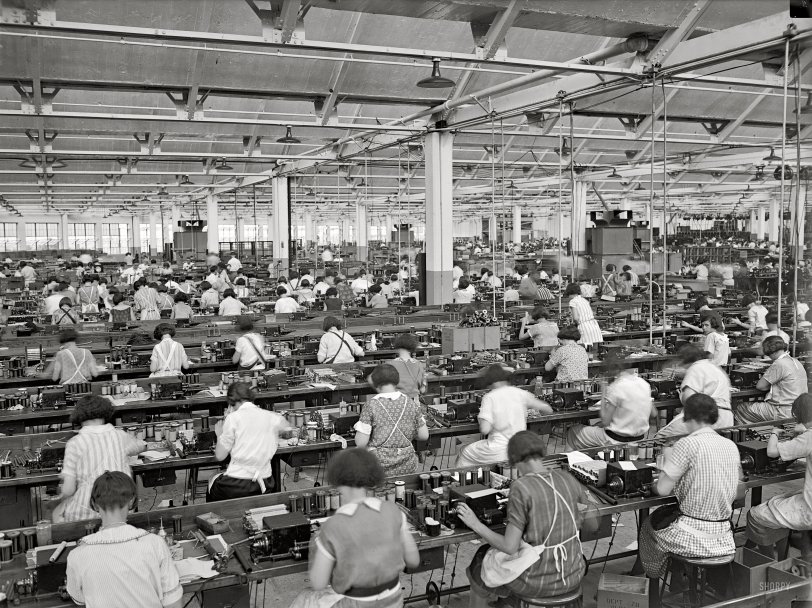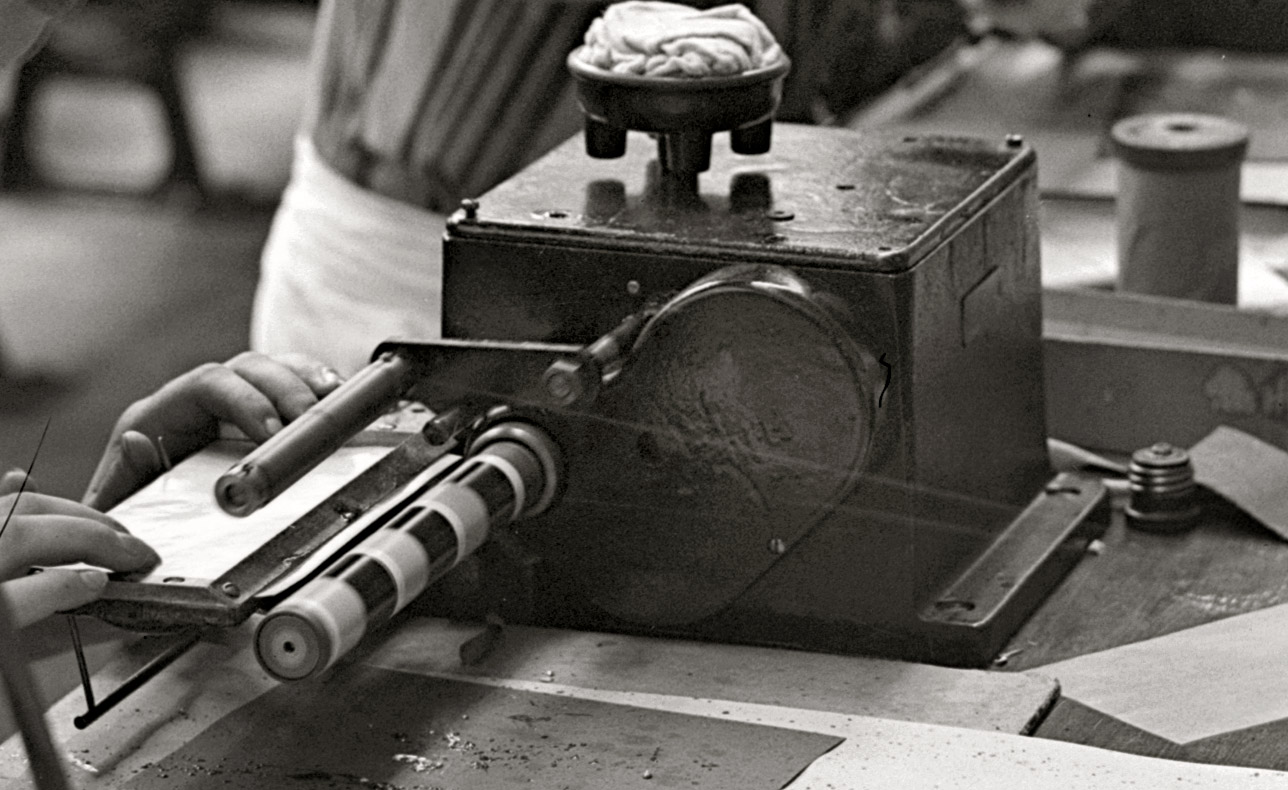


Framed or unframed, desk size to sofa size, printed by us in Arizona and Alabama since 2007. Explore now.
Shorpy is funded by you. Patreon contributors get an ad-free experience.
Learn more.

- Icing Platform?
- Indiana Harbor Belt abides
- Freezing haze
- Corrections (for those who care)
- C&NW at Nelson
- Fallen Flags
- A dangerous job made worse
- Water Stop
- Passenger trains have right of way over freights?
- Coal
- Never ceases to amaze me.
- Still chuggin' (in model form)
- Great shot
- Westerly Breeze
- For the men, a trapeze
- Tickled
- Sense of loneliness ...
- 2 cents
- Charm City
- What an Outrage
- Brighton Park
- Catenary Supports
- Just a Little Before I was Born
- Afternoon normal
- The Flat Iron Cafe survives
- Aging in Place
- Raise your hand
- Good and Bad
- Oh, the 70's
- Nooooooi
Print Emporium
The Women of Radio: 1925

1925. "Atwater Kent radio factory, Philadelphia. New addition." Can we pick up the pace, girls? National Photo Company glass negative. View full size.
Irene Bobs Her Hair
The initiator of the bobbed hair craze is said to have been the dancer Irene Castle. She had her hair cut short in 1914 before going into the hospital for an appendectomy because she disliked having other people dress her hair. She wasn't trying to set a trend, but she sure did!
Soldering in flux
The large soldering irons are necessary for working on the point-to-point wiring of vacuum-tube electronics. The slimmer, "pencil" irons (with their lower-wattage heat) came along with the advent of solid-state gear.
Compared to the tiny surface-mount components of today (look inside your cellphone sometime), the parts comprising these "Olde Schoole" radios were huge.
It's been said that women are less error-prone than men when doing assembly tasks. Working in manufacturing, I've seen this firsthand. The ladies have the knack.
Thanks for the closeup
In the closeup you posted, the rod above the coil being wound appears to have three grooves in it - it looks like it's guiding three wires at once. You can faintly see the three wires.
I'd guess that they wind three coils at a time, then cut them apart. (They can't remain connected together in that arrangement when used in a radio, as their magnetic fields would interact.)
Thanks again for the fascinating look at how it was all done those many years ago.
I want one now, Daddy!
"Alright, we're all unwrapping Wonka bars now! An extra quid in your pay for the one who finds a Golden Ticket!"
Oh, my back!
I'm imagining sitting on one of those stools, bent over for 8+ hours a day. My neck and back ache just from thinking of it..
Big operation
These ladies are making many, many radio parts.
The coil winders are interesting. They are driven by a shaft under the benches, with leather drive belts like those on sewing machines. I have a version of this machine made in the fifties, and it's quite similar in appearance.
I'd be interested to see what the process looks like up close. Did the machine guide the wire along the length of the coil as later ones did, or was that done by the operator's skill?
Oh, and the huge soldering iron looks like something to make stained glass windows, not radios, with. They are the size of a pencil now.
[Below, from another A-K photo. There are around a dozen on this site. Click to enlarge. - Dave]
In answer to my own question, I'll say ...
Clara Bow
Bob & Louise
Louise Brooks should get credit for the bob cut. She was truly too hot for Hollywood and really gorgeous.
Trendy
It's pretty obvious that the pageboy haircut was the fashion of the day. Anyone know who or what was the trendsetter?
Wirewound resistors
At least the nearer girls are winding resistors. Back in the '50s, my grandpa gave me his 1926 Atwater Kent, which I promptly and stupidly took apart. I remember the feel and smell of those wirewounds.
Strange to think that the girl who made those resistors is probably in this picture somewhere.
What I Did on My Summer Vacation
Aprons provided, unless you disdain their use. Not too many young men here. Or were they supervisors?
Coil winders
My best guess is that they are winding coils to be used in radios. If I remember correctly, some coils were used in the interstage transformers and some others were for band selection. One type of radio used to have a selection of coils wound on a coil former that could be swapped out depending on what band you wanted to pick up.
Years later, Dynaco of Stereo 70 fame made Philadelphia its home as well.

























On Shorpy:
Today’s Top 5